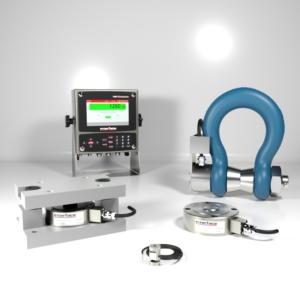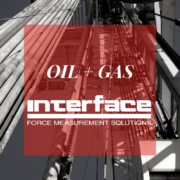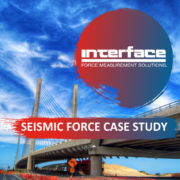Ruggedized Test and Measurement Solutions Webinar Recap
Interface’s event, Ruggedized Test and Measurement Solutions, details various transducers, instrumentation and accessories that are designed to withstand environmental stresses and harsh conditions.
The types of testing use case that require ruggedized solutions are material testing, high and low temperature environments, structural and fatigue tests, high cycle count tests, any test for products exposure to moisture or humidity, pressure tests, as well as underwater and in-fluid tests. As noted, this applies to every industry, including maritime, aerospace, food packaging, consumer products, construction, medical devices and automotive.
Interface considers ruggedization as force measurement solutions designed and fabricated for use in extreme environments and applications, ability to operate within accuracy specifications while withstanding one or more environmental stresses or harsh conditions.
During this event, Ken Bishop and Elliot Speidell details the top factors when evaluating test and measurement products used in extreme environments, such as exposure to high or low temperatures, depth of submersion, moisture and water concerts, dust, and other harsh conditions. They present key questions to answer when evaluating your testing requirements, as well as top considerations.
These important evaluation subjects and ruggedized product factors are based on years of experience in collaborating with companies around the world. They define use cases and actual examples of Interface load pins, instrumentation, stainless steel load cells, enclosures and accessories used in all types of harsh and even hazardous environments.
Here is a quick preview of all the topics thoroughly discussed during this event.
- Environmental Stresses and Harsh Condition Categories
- Standards and Ratings
- Structural and Material Options
- Ruggedized Test and Measurement Devices
- Sealed Products and Enclosures
- Extreme Temperatures and Cycling
- Exposure to Moisture and Submersibles
- Test & Measurement Applications Using Ruggedized Products
The entire online seminar is now available on-demand. Watch it here.
Top Selling Interface Ruggedized Products
- 2400 Standard Stainless Steel High Capacity Load Cell
- 3200 Precision Stainless Steel Load Cell
- 3410 Intrinsically Safe LowProfile® Load Cell
- 3420 Coil Tubing Intrinsically Safe Load Cell
- JB104SS 4-Channel Stainless Steel Junction Box
- LP Stainless Steel Load Pin
- ISHK-B Bow Type Crosby™ Cabled Load Shackle
- 2000 High Precision Canister Load Cell
- SSM-FDH Sealed High Temperature S-Type Load Cell
- WMC Sealed Stainless Steel Miniature Load Cell
- IPCD Pressure Compensated Downhole Load Cell
These types of products follow strict certification standards and ratings. During the online seminar, Interface product experts detail the standards and ratings related to intrinsically safe products, sometimes referred to as hazardous location use, as well as solutions designed to meet safety, regulatory or compliance requirements.
The standard ensures that an intrinsically safe device is incapable of triggering combustion or igniting any gasses or vapors. The device is safe to use around dust and gas without risking static electricity or heat discharge from the device igniting the surrounding volatile gasses, powders, and liquids. Explosion proof applies to a device enclosed in a case that can withstand a gas or vapor explosion. Should there be an explosion, it will be contained within the enclosure.
Interface offers products with different IP ratings, including IP66, IP67 and IP68 applied to different transducers and instrumentation. Ingress protection (IP) ratings, which grade the resistance of an enclosure against the intrusion of dust or liquids ingress protection (IP) ratings, which grade the resistance of an enclosure against the intrusion of dust or liquids.
- IP65 – Dust-tight, protected against water jets
- IP66 – Dust-tight, protected against powerful water jets
- IP67 – Dust-tight, protected against the effects of temporary submersion in water
- IP68 – Dust-tight, protected against the effects of continuous immersion in water
What is the difference between IP66 and IP68? IP68 enclosures also provide dust-tight performance against solids. However, they are also rated for significantly better defense against water ingress than an IP66 enclosure. An IP68 enclosure can withstand submersion for over 30-minutes at up to a specified water depth.
Interface also has a range of instrumentation products that are NEMA, and IP rated based on the enclosure and housing designs. These include:
- 920I Programmable Weight Indicator (NEMA 4)
- 1280 Programmable Weight Indicator (NEMA 4)
- 480 Bidirectional Weigh Indicator (NEMA 4)
- BX8-AS 8-Channel DAQ and Amplifier (IP67)
- CSC Inline Signal Conditioner and Amplifier (IP67)
- CSD Embedded Load Cell Converter and Digitizer Module (IP67)
- JB1100 Junction Box (NEMA 1)
Interface offers standard and customized solutions. Contact our application engineers to discuss your options and how to ensure you have the right product to match the conditions of our test and measurement environment.











